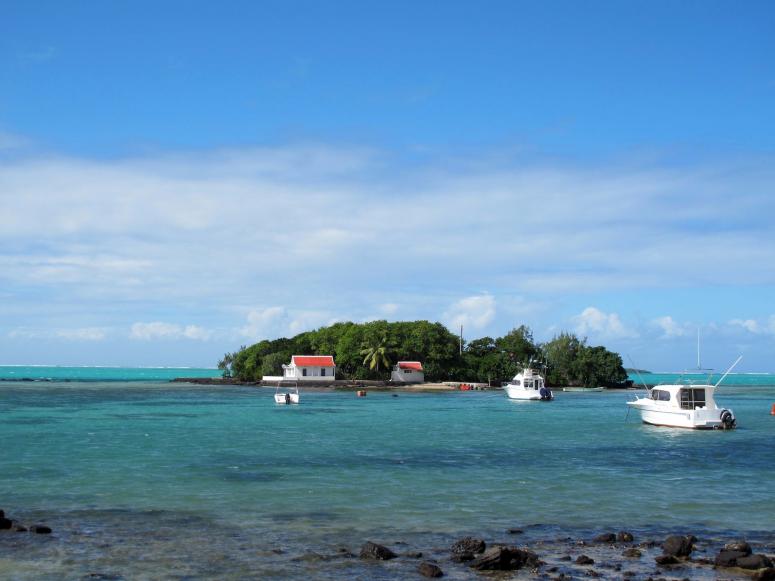Dive in Mauritius
Diving packages in Mauritius
-
2 TANK DIVE INCL EQUIPMENT
2 Tank Dive, including equipment Our regular daily 2 tank destinations in the north of Mauritius are: : Bain Boeuf / Cap Malheureux: Grand Baie / Péreybère: Coin de Mire: Trou Aux Biches90 $ More Information -
OPEN WATER DIVER COURSE
Choose either the PADI or SSI Open Water Diver Course: Includes:: eLEarning: Equipment: Pool sessions: Open Water Sessions Courses are conducted by our PADI/SSI qualified instructors and happen over 3 days.496 $ More Information -
4 DIVE PACKAGE (2 X 2 TANK) - EXCL EQUIPMENT
4 dive packages (2 x 2 tank dives), excluding equipment Our regular daily 2 tank destinations in the north of Mauritius are: : Bain Boeuf / Cap Malheureux: Grand Baie / Péreybère: Coin de Mire: Trou Aux Biches146 $ More Information -
Advanced Open Water Diver
Exploration, Excitement, Experiences. They’re what the PADI Advanced Open Water Diver course is all about. And no, you don’t have to be “advanced” to take it – it’s designed so you can go straight into it after the PADI Open Water Diver course. The Advanced Open Water Diver course helps you increase your confidence and build your scuba skills so you can become…370 $ More Information -
4 DIVE PACKAGE (2 X 2 TANK) - INCL EQUIPMENT
4 dive packages (2 x 2 tank dives), including equipment Our regular daily 2 tank destinations in the north of Mauritius are: : Bain Boeuf / Cap Malheureux: Grand Baie / Péreybère: Coin de Mire: Trou Aux Biches175 $ More Information
Scuba Diving in Mauritius
Mauritius is blessed with turquoise water, blue lagoons and amazing diving! On Mauritius you can find a lot of variety when it comes to diving: from coral reefs with abundant marine life, to drop-offs decorated with gorgonian fans, rock formations with an interesting arch architecture, some tunnels and caves, and rusted shipwrecks that bring you into a day-dream era.
The island is surrounded with a barrier reef, and the diving areas are divided in North-West (from Tombeau Bay till the islands of the North), South- West (from the Morne to Flic en Flac), and the East (from Belle Mare to Mahebourg). Each of these different areas has a different kind of dives and different kind of sea landscape. The South coast is a no dive zone, due to dangerous and rough sea.
Diving in Mauritios you will find colorful tropical fishes but also pelagic species. Here are scorpion fish, stone fish, lost of different eels, and you will see sharks here too: black tip reef sharks, bull sharks and Grey sharks. Mauritius is also famous for dolphins and spermwhales.
In North there is "La Fosse aux Requins" where the diving is in a bowl shaped basin which is a home to black tip reef sharks. Wreck dive at the “Hassen Mian“, or the “Silver Star“, and if you like the underwater photography don't miss the wreck "Stella Maru".
The islands of the North offer thrilling diving, but are rarely visited by the clubs because of their distant location. bif you have the opportunity to go, dive in "The Wall" with pelagic species, or the wreck of “Djabeda“, or the “Sleepers' Cave“, which often shelters sleeper sharks. One the most spectacular site is found in Round Island, a unique place to dive with pelagic marine life: sharks, shoals of barracudas, marlins, etc. But the most famous and visited site of the Northern islands is the renowned “Shark Pit”, behind Flat Island. From November to May it welcomes a significant number of black-tailed sharks, which blivious to the divers swim in the oxygenated waters due to the swell. Diving in this area will vary according to conditions at sea, which can be very rough if there's strong wind.
In the West Flic en Flac is the best dive area. Don't miss "Rempart Serpent" which is home for scorpion fish, stone fish, lionfish and eels etc. If your choice are wrecks you need to dive the "Kei Sei 113" and "Tug II". The South-western part is famous for the presence of dolphins that take shelter in the bays of Tamarin or in Black River. In South-East will you have a scenic dive, "The Cathedral", with a dramatic terrain, where you'll find caves, arches and tunnels which attract pelagic creatures. Another good place to dive is "Coloroda" which is a canyon. And in the East you will find coral canyons and sandy valleys patrolled by Bull and Grey sharks.
It's possible to dive year around, but the best season is between October to December and March to April. In January to February there can by cyclones in the area. In July to August there are strong winds that makes the sea rough and hence turns the visibility into bad. The visibility can vary from 10 – 40 m. Temperature is around 22°C, being the highest temperature in December with 28°C. In general terms you'll be good with a 3-5 mm wet suit. Be aware that some dive sites have strong current, in particular the channel of Belle Mare, which has frequent violent currents (most of the dives here are drift dives).
There around 40 different dive shops around the island. Most of them are located in hotels, but you are welcome to dive with them anyway.
(By Susanne Stigsson)
Travel to Mauritius
Mauritius is a small island in the Indian ocean, famous for the turquoise water, blue lagoons and white sandy beaches. It also has the fame of being a honeymoon and expensive paradise island -Which it is!. But if you leave the luxury resort aside, you will find much more.
Mauritius Island is also considered as „Almost as nice as the Maldives“, choosing among a huge variety of diving-sites and having the great opportunity to meet here and there a hungry shark. The continuous stretch of coral reefs around the island have not only blessed Mauritius with beautiful beaches but also offers great diving sites. Diving amongst our tropical fishes may be comparable to diving in an open aquarium.
There are several international companies flying to Mauritius, and once in the island is it easy to travel by bus or get a taxi. Most of the accomodation in Mauritius is high end resorts, but there's also some possibility to find a more budget lodging.
Besides diving, some of the activities in the island are spotting dolphins in Tamarin; if you lucky you can see sperm whales; and there are a national park in Black River, where you can also see a big waterfall. Its landscape offers the possibility to do some hikes and treeking in the mountains, so if you're up for that, in south there is a mountain that is a world heritage.
But if you preffer to stay in the sea side, there are lots of smaller islands that you can visit by boat -there are plenty of boat operators, and you'll be able to choose between speedboat or catamaran.
(By Susanne Stigsson)




